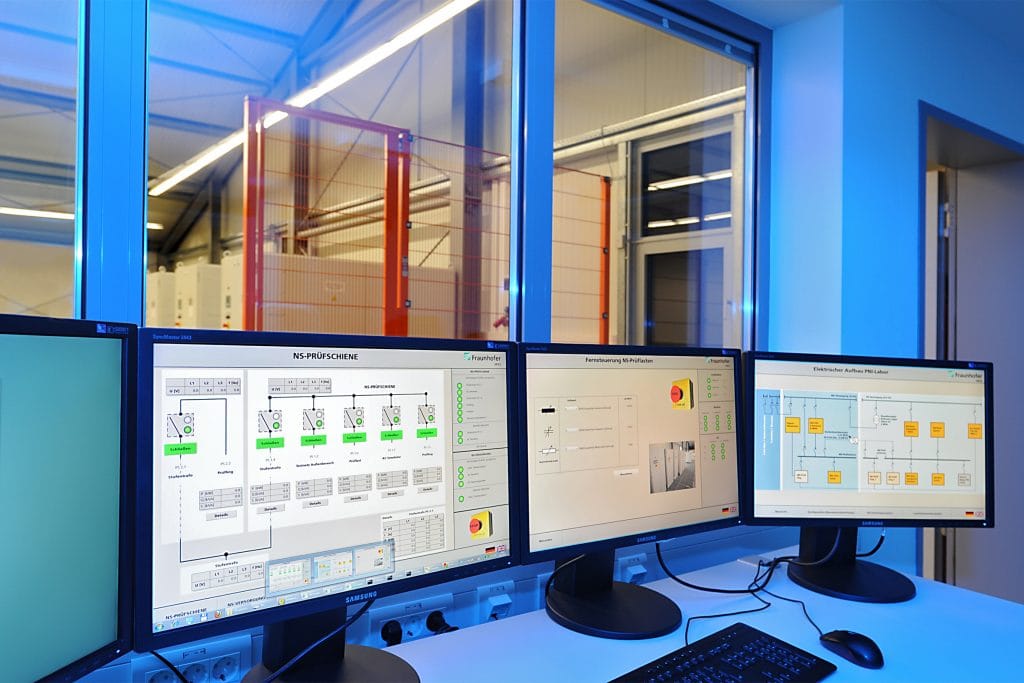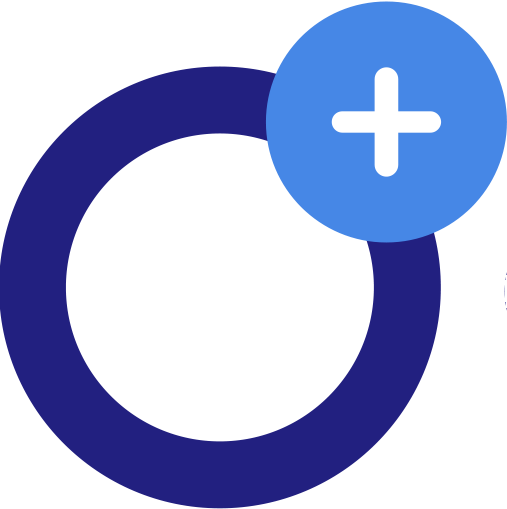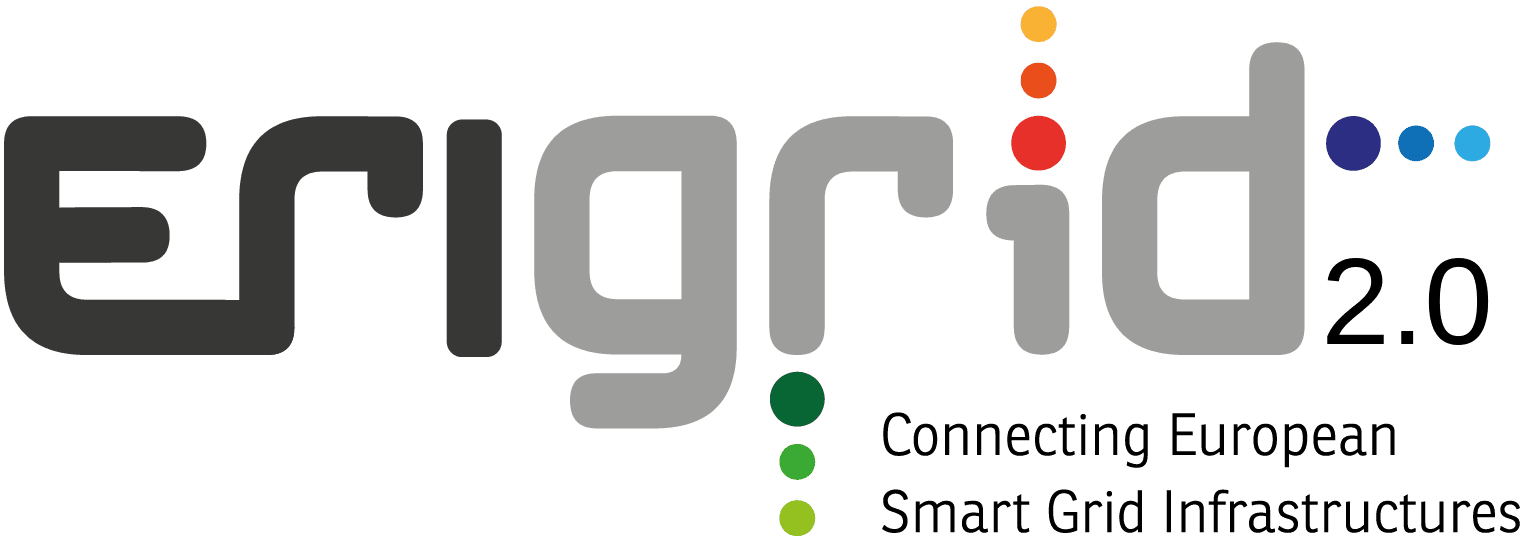
In the IEE-SysTec test center for smart grids and electro mobility, Fraunhofer IEE is developing and testing new equipment and operation strategies for smart low and medium voltage grids. In addition, investigations regarding grid integration and grid connection of electric vehicles and their power generated from renewable energy sources as well as photovoltaic systems, wind energy plants, storage and hybrid systems are carried out under realistic conditions here.

A large open-air ground of approx. 80,000 m² offers sufficient space and very good conditions for solar PV systems and wind turbine generators. Furthermore, the open-air ground provides configurable distribution grid sectors (low and medium voltage) as well as an outdoor test infrastructure with different generating units, storage devices and programmable loads.
Location: Kassel, Germany
The IEE-SysTec test center consists of six thematic lab areas:
PNI – Test Lab Network Integration
TPE – Test Lab Electro mobility
EMA – Rotating electrical machines
DCT – Direct Current Technology (under development)
HST – Hybrid Systems Test Field
SGLV – Smart Low Voltage Grids
PVT – Photovoltaic Test Field
The lab building in the eastern area of the premises is presently used for three laboratory sections: one of the labs, which is entitled “PNI” includes a testing area for low and medium voltage converters or distribution grid equipment. Here it is possible to develop and test the electrical properties and in particular, the ancillary services of distributed generators in the power range up to 6 MVA. Two mobile test container able to test the fault-ride-through behavior of generation units/ plants in case of under- and overvoltages has been integrated into this laboratory.
The second lab “TPE” is equipped with facilities to test grid integration of electric vehicles and electrochemical storages. Besides hardware simulators for batteries, bi-directional charging controllers, charging points also a power-hardware-in-the-loop (PHIL) test setup with real-time simulator and a 270 kVA electronic three-phase grid simulator is available for investigation of new control and operation management algorithms of electrical power systems.
The Hybrid System Test field (HST) consists of a freely configurable hybrid power system, which can also be utilized for microgrid investigations. The HST and its devices can be operated together with the other SysTec facilities. Thereto the components (wind turbine generator, PV-systems, diesel gensets, electrochemical storages and programmable loads) are connected via configurable low and medium voltage feeders.
The lab area Smart Low Voltage Grids (SGLV) is equipped with freely configurable low voltage feeders, household emulators with smart-meter, roof-top PV systems, heat-pumps, domestic appliances, charging points for electric vehicles and further devices for investigation and demonstration of intelligent network operation and low voltage automation technologies.
SysTec PNI: Lab for Network Integration
The PNI is part of the Fraunhofer IEE SysTec test center for smart grids and electro-mobility. Currently devices connected to the low voltage grid with rated power up to 1.25 MVA and those with connection to medium voltage networks up to 6 MVA may be tested. For the testing of the static and dynamic response of generators and network assets different test setups are available.
- Control room: The test sequences are supervised and the test lab infrastructure is controlled from a central control room. As part of the control the relevant electrical data, in particular electrical power data, can be acquired, recorded and analyzed centrally. Matlab® / Simulink® applications may be integrated into the control.
- Low voltage test bay: For investigations of devices connected to low voltage networks a tap transformer (1.25 MVA) with a wide, finely adjustable voltage range from 254 VAC to 690 VAC as well as an electronic AC grid simulator (100 – 900 VAC, 45 – 65 Hz, max. 1 MVA) is available. For investigations of generators with inverters, e.g. photovoltaic inverters, fast controllable DC sources (14 units, with max. 3000 ADC @ 1000 VDC) can be utilised. Programmable loads with 3x 200 kW resistive load, 3x 200 kvar inductive load and 3x 200 kvar capacitive load, which may be adjusted in small steps respectively, are available as well. The low voltage test bus bar is divided into 2 bus bar sections to allow an easy investigation of line regulators, e.g. voltage stabilizers. To research interactions between different components operating on the same grid part configurable low voltage networks can be connected to the test bus bar.
- Medium voltage test bay: By utilizing digital test signal generators the secondary control technique (protection relays and controls) of generating units and network assets can be tested. For testing the transient behavior two mobile test container (UVRT and OVRT test facilities) are available, which are integrated into the central lab control as well. Since the test setup is inside a container even on-site measurements and tests of complete power plants are possible. In this case the test facility is connected to the medium voltage network between the equipment under test and the network connection point of the grid operator. It produces voltage dips or voltage surges on the medium voltage side of the equipment under test without disturbing the public power grid. With the UVRT and OVRT test facilities 3-phase as well as 2-phase faults can be generated.
Within IEE-SysTec Fraunhofer IEE offers the following services to research and industrial partners:
- Examination of distributed generators (PV inverter, CHP units, diesel gen-sets etc.) in accordance with different grid connection guidelines (low voltage, medium voltage)
- Field and laboratory tests of hybrid systems, small wind power plants and individual smart grid components as well as tests with hardware emulations under defined operating profiles
- Real time distribution grid simulations to test control centres and the grid integration of distributed generators, electric vehicles and power storage (hardware-in-the-loop)
- Investigation of operating performance strategies for individual plants and hybrid systems (e.g. photovoltaic, storage facilities, heat pumps, combined heat and power)
- Metrological examination of performance (tripping characteristic) of protection devices
- Measurements of power quality and analyses of performance
The Fraunhofer-Gesellschaft, headquartered in Germany, is the world’s leading applied research organization. With its focus on developing key technologies that are vital for the future and enabling the commercial exploitation of this work by business and industry, Fraunhofer plays a central role in the innovation process. As a pioneer and catalyst for groundbreaking developments and scientific excellence, Fraunhofer helps shape society now and in the future. Founded in 1949, the Fraunhofer-Gesellschaft currently operates 74 institutes and research institutions throughout Germany. The majority of the organization’s 28,000 employees are qualified scientists and engineers, who work with an annual research budget of 2.8 billion euros.
The offered lab infrastructure of the IEE-SysTec test center is located in Fuldatal Rothwesten near to Kassel, Germany.
For safety reasons, the users are not expected to operate the experimental setups and especially the lab infrastructure by themselves; even when safety instructions will be provided, tests will always be carried out by the staff of Fraunhofer IEE together with the user group. The scheduling of the lab use for the user group project will be agreed and booked prior to the stay according to the availability of the involved staff and lab infrastructure. Administrative documentation for the access (contract, non-disclosure agreement, etc.) will comply with ERIGrid 2.0 common indications.
In addition to the general corporate services and the support and advice on accommodation and transportation to IEE-SysTec test center, the access being offered includes supervision and help of Fraunhofer IEE’s staff:
- As a complement to the pre-access contacts between the user group and AIT, the stay will start with an introductory meeting with a senior researcher for confirming the stay conditions (confidentiality, safety indications), scheduling the activities, explaining the on-site procedures, clarifying the logistics and technical details.
- Preparatory work: a laboratory technician/engineer will assist the users for the installation of the devices, electrical connections, use of the specific instrumentation, preparation of a test procedure (if necessary) and programming of the experimental conditions.
- IEE’s researchers will support the realisation and follow-up of the experiments.
- IEE’s researchers will support the results interpretation, data processing and analysis.
Often, a typical stay of 2-3 weeks is foreseen for a single user group, but this period could be extended depending on the concrete user project. The user group (usually 2-3 persons) can use the lab infrastructure for the defined time.
Reimbursement of expenses
User expenses for the lab access are paid by ERIGrid (EU H2020 Programme). This includes travels to Fraunhofer IEE premises by public transport (plane, train, bus), accommodation, daily subsistence, and daily transportation during the stay according to the German “Bundesreisekostengesetz”.
For the user projects taking place in Fraunhofer IEE, we will refund the stay expenses when the stay is finished (or on agreed periods): the user must declare the incurred expenses and present the invoices/receipts to AIT in order to get the refund.
Logical expenses must be made by the user: travels will be made in economy class and conventional hotels (not luxury) or equivalent accommodation will be used.
Do you have questions left? Feel free to contact us below.
If your enquiry contains strictly confidential information, please leave your contact details below and the lab host will contact you personally.




